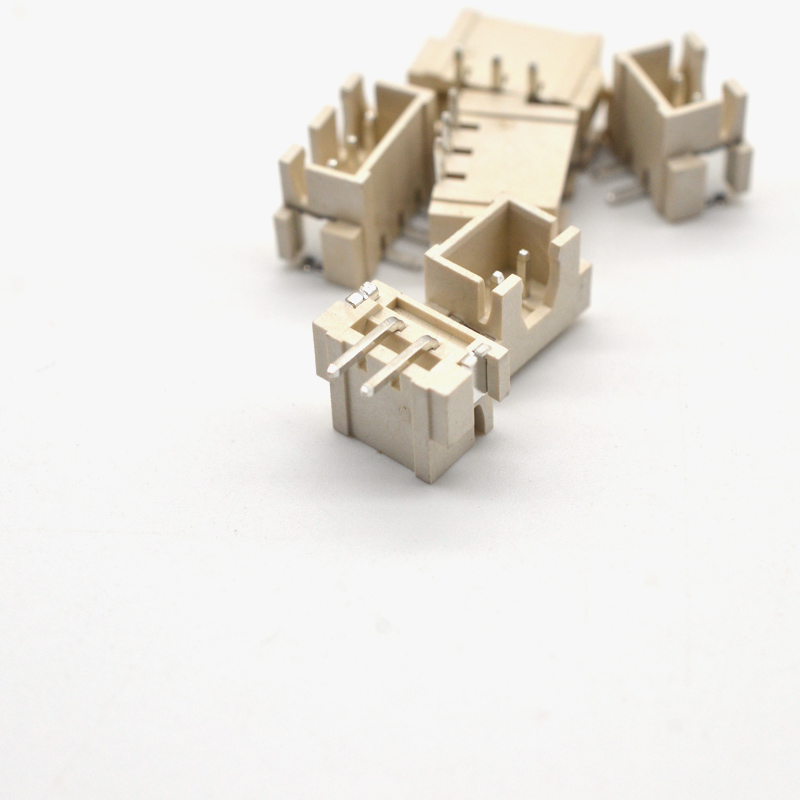Verbindingsmethode van industrieel:verbindingsstuk
Industrial verbindingsstuks are also called verbindingsstuks and plugs. Its function is to connect two active components and act as a current and signal transmission function. With the changes in the application environment, verbindingsstuks hebben een verscheidenheid aan verbindingsmethoden afgeleid, het doel is om zich beter aan te passen aan de scèneomgeving en een stabiele signaaloverdracht te garanderen.
1. Schroefdraadverbinding
Dit is de traditionele verbindingsmethode en het zal handig zijn om in sommige grotere componenten of in een omgeving met sterke trillingen te werken. Het voordeel van dit type verbinding is dat het betrouwbaar is in gebruik en de kabel wordt gefixeerd door de wrijving van de moer en het tandwiel. Als je een zekering toevoegt om losraken te voorkomen, is het effect beter. Het nadeel is dat de demontagesnelheid relatief laag is en dat het een beetje elektriciteit kost om de draad terug te trekken, wat tijdrovend is.
2. Bajonetaansluiting
Dit is een verbindingsvorm die snel kan verbinden en verbreken. Het wordt vaak gebruikt om twee eenvoudige elektrische componenten aan te sluiten.Connectorenthat are connected by a snap-in type will mark the correct snap-locking direction at the buckle. The user can observe whether the buckle is installed in the small hole on the side of the verbindingsstuk nut.
3. Stekkerverbinding
The plug-in connection method is a commonly used connection method. The plug and socket of the verbindingsstuk can be connected and separated by moving in the horizontal direction. No twisting and optional installation are required, and the connection can be completed in a short time. And separation. The common plug connection has two structures: ball and pin. This connection method saves the traditional mechanical locking mechanism, so once the verbindingsstuk is inserted by mistake, it is very difficult to pull it out.
4. Kastaansluiting
Het is gebaseerd op de elektrische verbindingsmethode die zich dicht bij het frame bevindt en blind moet worden aangesloten op de apparatuur. Het gebruik van deze methode kan de elektrische apparatuur erg licht en klein maken. Elke unit kan onafhankelijk van elkaar werken, wat gemakkelijker te onderhouden is en een hogere betrouwbaarheid heeft. Aangezien de bediener van deze verbindingsmodus de verbinding niet kan waarnemen, moet er een nauwkeurig positioneringsapparaat zijn om de vlotte verbinding te ondersteunen. Gebruik meestal een potentiaalvrij contact of veerontwerp om de juiste aansluiting te garanderen.
5. Soldeeraansluiting
Soldering connection refers to the formation of continuous metal between the solder and the surface to be soldered. Therefore, the prerequisite for the verbindingsstuk is to have solderability. The common plating on the soldering end of the verbindingsstuk includes metals such as tin alloy, silver and gold. The reed type contact has the welding piece type, the punching welding piece type and the notched welding piece type for the common welding end: the pinhole contact has a drilling arc notch for the common welding end.
6. Doorboor de verbinding
Piercing verbinding wordt ook wel isolatie verdringing verbinding genoemd. Het heeft de kenmerken van hoge betrouwbaarheid, lage kosten en handig gebruik. Het is veel gebruikt inverbindingsstuks in the printing industry. It is suitable for interconnection between ribbon cables. It is not necessary to puncture the insulation layer of the cable when connecting. The tip of the "U"-shaped contact spring of the verbindingsstuk is used to pierce the insulation layer, so that the conductor of the cable slides into the concave groove of the verbindingsstuk and is fixed, so that the cable and The verbindingsstuksstaan in nauw contact.


